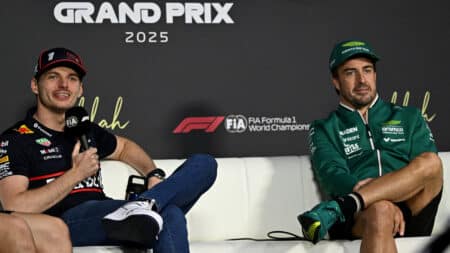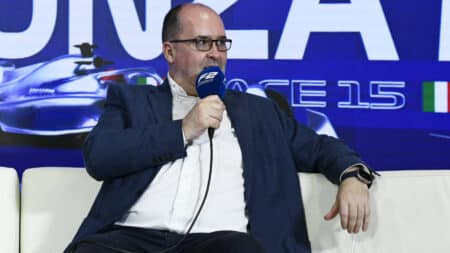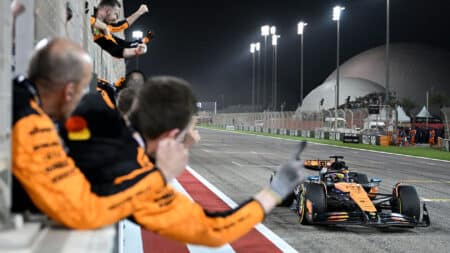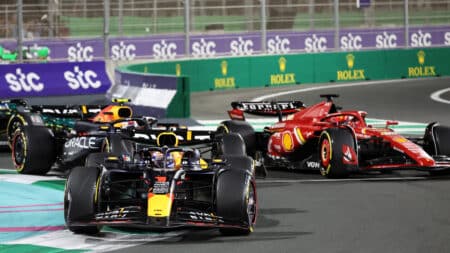
Alonso: Verstappen not a threat to my Aston Martin F1 seat
Fernando Alonso says it's "very unlikely" Max Verstappen will be his team-mate, and rejected the idea that he could be replaced by the Dutchman
Here’s a lesson for the FIA and Formula 1. In 1998 CART introduced a new rear wing called the Handford Device for its two 500-mile races on the high-banked Michigan and California superspeedways. It was used only at those two tracks and was the result of conversations between Newman/Haas aerodynamicist Mark Handford and CART’s technical director Kirk Russell about how to improve overtaking and wheel-to-wheel racing.

Serious competition in CART in the preceding years between four engine manufacturers, two tyre companies and four car builders meant performance had shot up. Qualifying engines with 1000bhp began to appear and lap speeds increased at all tracks. But as speeds went up the quality of the racing declined, and Handford proposed a solution.
With conventional wings it was becoming more and more difficult to pass on the big speedways as drivers encountered a churning wave of turbulence as they tried to overtake. Handford’s solution was the Handford Device, a flat plate rather than a wing that created zero downforce but left a hole in the air, enabling a following car to draft and slingshot past.

“The cars made a lot of downforce from the [tunnelled] underbody but the rear wing was a non-downforce-producing device,” Handford says. “We came up with a gadget on the rear wing that created drag but not downforce. Its wake, which was very big, was neither swept upwards nor downwards. When the next car came along it ran into a hole in the air and got a huge tow. I suppose it was exciting because whoever was in the lead on the last lap was guaranteed to lose.”

Indeed there were a record 62 lead changes during the 1998 Michigan 500 and the season-closing California 500 was similarly hectic. But the Handford Device lasted only a few years before the CART/IRL war resulted in the Michigan/California tracks switching to Tony George’s series, where they played host to the very different Indycars.
“What you need is a situation where the guy behind, who has neither track position nor clean air, at least has a drag advantage,” says Handford. “If you follow anybody you’re always going to end up with dirty air, but if you have less drag you’ve got a fighting chance of drafting the car in front. That’s exactly what you get in motorcycle racing.”
Handford is baffled by the FIA’s narrow thinking on this subject. “There’s a very narrow view in F1. They need someone to say you have to get away from flat bottoms [on the cars] and put downforce in the underbody and take it out of the wings. If they did that I think it would become much more exciting to watch.”

Fernando Alonso says it's "very unlikely" Max Verstappen will be his team-mate, and rejected the idea that he could be replaced by the Dutchman

Former FIA second-in command Robert Reid has expanded on the reasons behind his exit, saying that he was excluded after raising concerns over "fundamental principles" such as transparency and accountability

There's several key differentiators that could help you win big in F1 Fantasy for this weekend's 2025 Saudi Arabian GP. Here are our predictions; tips on drivers to avoid; which chips to play and further analysis

Can Red Bull rebound from its poor Bahrain showing? And will it be Piastri or Norris leading McLaren's charge? Here's the five themes to watch for at the Saudi Arabian GP